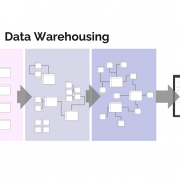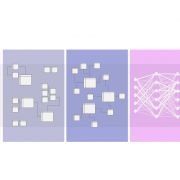What Is Data Lake Architecture?
The volume of information produced by everyone in the world is growing exponentially. To put it in perspective, it’s estimated that by 2023 the big data analytics market will reach $103 billion.
Finding probable solutions for storing big data is a challenge. It’s no easy task to hold enormous amounts of information, clean it and transform it into understandable subsets — it’s best to take one step at a time.
Some reasons why companies access their big data is to:
- Improve their consumer experience
- Draw conclusions and make data-driven decisions
- Identify potential problems
- Create innovative products
There are ways to help define big data. Combining its characteristics with storage management methods help experts make their clients’ information digestible and understandable. Cue data lakes, which are repositories for big data in its native form.
Think of an actual lake with multiple water sources around the perimeter flowing into it. Picture these as three types of data: structured, semi-structured and unstructured. All this information can remain in a data lake and be accessed in its raw form at any time, making it an attractive storage method.
Here’s how data lakes are created, some of their components and how to avoid common pitfalls.
Creating a Data Lake
One benefit of creating and implementing a data lake is that structuring becomes much more manageable. Pulling necessary information from a lake allows analysts to compare and contrast data and communicate any connections between datasets to their client.
There are four steps to follow when setting up a data lake:
- Choosing a software solution: Microsoft, Amazon and Google are cloud vendors that allow developers to create data lakes without using servers.
- Identifying where data is sourced: Where is your information coming from? Once sources are identified, determine how your data will be cleaned or transformed.
- Defining process and automation: It’s vital to outline how information should be processed once the data lake ingests it. This creates consistency for businesses.
- Establishing retrieval governance: Choosing who has access to what types of information is crucial for companies with multiple locations and departments. It helps with overall organization. Data scientists, for this reason, primarily access data lakes.
The next step would be to determine the extract, transform and load (ETL) process. ETL creates visual interpretations of data to provide context to businesses. When information from a data lake is sent to a warehouse, it can be analyzed.
Components of a Data Lake
Here is what happens to information once a data lake is created:
- Collection: Data comes in from various sources.
- Ingestion: Data is processed using management software.
- Blending: Data is combined from multiple sources.
- Transformation: Data is analyzed and made sense of.
- Publication: Data can be used to drive business decisions.
There are other aspects of a data lake to keep in mind. These are the critical components that help provide business solutions:
- Security: Data lakes require security to protect information — they do not have built-in safety measures.
- Governance: Determine who can check on the quality of data and perform measurements.
- Metadata: This provides information about other data to improve understanding.
- Stewardship: Choose one or more employees to take on the responsibility of managing data.
- Monitoring: Employ other software to perform the ETL process.
Big data lends itself to incorporating multiple processes to make it usable for companies. The volume of information one company produces is massive — to manage it, experts need to consider these components and steps when building a data lake.
What to Avoid When Using Data Lakes
The last thing people want for their data lake is to see it turn into a swamp. When big data is processed incorrectly, its value decreases, making it useless to the business sourcing it.
The first step in avoiding a common pitfall is to consider the sustainability of the data lake. Planning processes are necessary to ensure it’s secure, and governing and regulating incoming information will allow for long-term use.
A lack of security causes another problem that can arise in data lakes. Safety measures must be implemented. Because enterprises will build data lakes for different purposes, it’s easy for information to become unorganized and vulnerable to hacking. With security, the likelihood of data breaches decreases, and the quality of data remains high.
The most important thing to remember about data lakes is the planning stage. Without proper preparation, they tend to be overwhelming due to their size and complexity. Taking the time and care to establish the processes ahead of time is vital.
Using Data Lake Architecture for Business
Data lakes store massive amounts of information to be used later on to create subsets, analyze metadata and more. Their advantages allow businesses to be flexible, save money and have access to raw information at all times.









Leave a Reply
Want to join the discussion?Feel free to contribute!